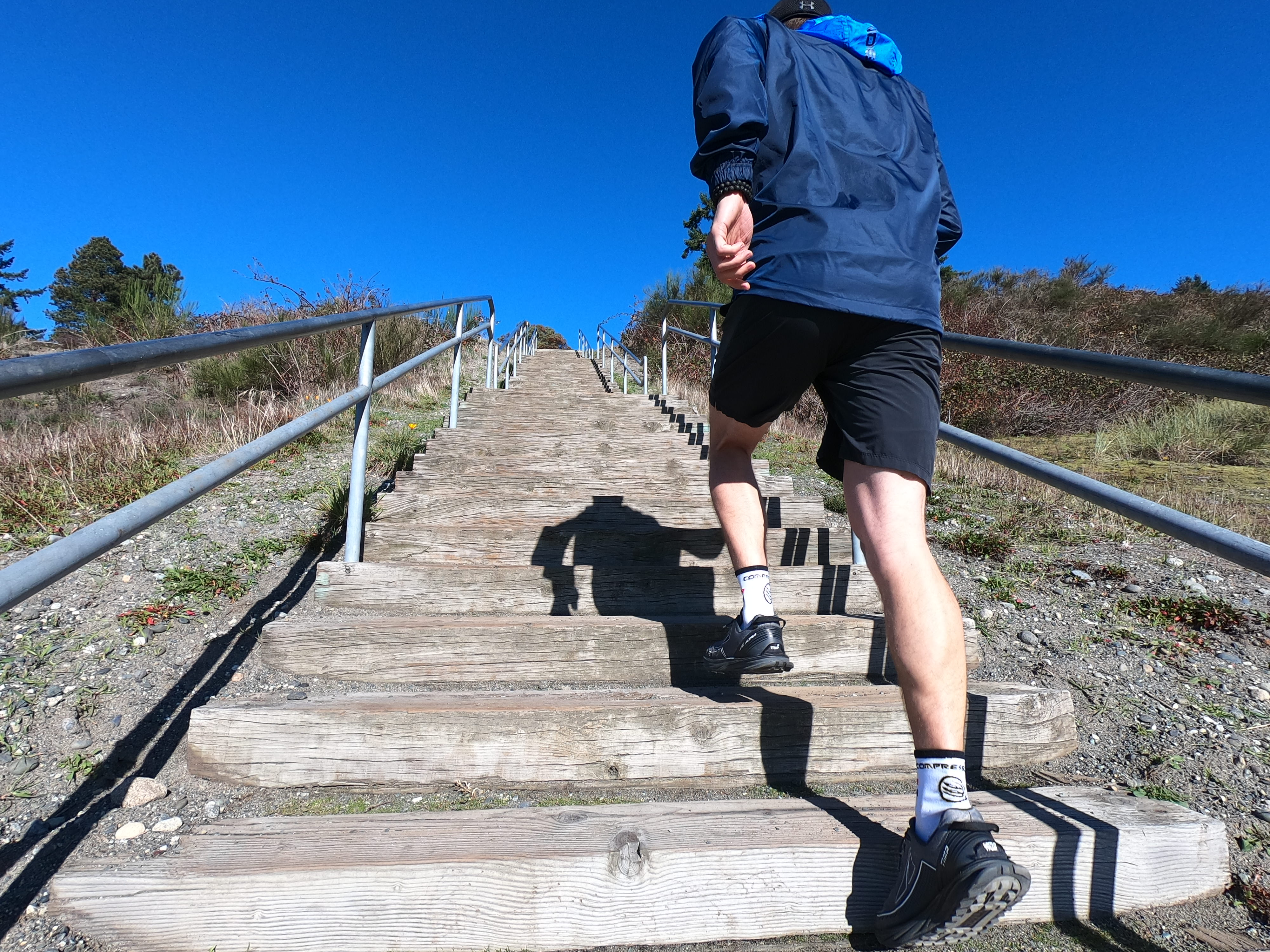
Even though strength training is often neglected in a running program, there are many benefits to why a runner should include strength training. I find it funny when people used to ask me why I was doing heavy single-leg Bulgarian squats and kettlebell (KB) swings while I was training for a marathon. We live in an age where if you are a runner, you run. If someone is lifting heavy weights, then he or she must be bodybuilding. We need to realize that a well-rounded fitness plan can be beneficial for the body. The following are 3 reasons why I feel runners need to strength train to complement their running program.
Injury Prevention
Runners deal with injuries pretty frequently and is a limiting factor for adhering to a run program. Running is notorious for overuse injuries due to always running forward with relatively no lateral movement. Excluding lateral movements cause certain muscles to be overworked, with other muscles in the body becoming weak and sometimes tight.
For example, the hip flexors repetitively drive the leg forward, in order to propel us forward. The front aspect of the hip becomes overused and the outside of the hip becomes weak from lack of use. The body needs an equal pull on joints from all directions in order for the joint to work properly; if there is an unequal pull, injuries can occur. Muscles may become tight and joints may become inflamed. The outside of the hip is important for running and we need to strengthen it in order to prevent overuse injuries.
Every time we take a stride, we are weight-bearing onto one leg and the outside of the hip has to contract to keep our hips level. When I go to local 5k’s I see a lot of people running with a limp, a knee brace on one of their legs, and maybe even KT tape all over their bodies. These compensations could potentially be due to weakness and poor motor control of the lateral hip muscles. When they become weak, the opposite hip drops and puts unnecessary torque onto the hip and surrounding joints.
This eventually can lead to knee pain, hip pain, back pain, foot pain, and the list can go on and on. Having a well-rounded strength-training program can help to prevent strains and sprains from happening. Therefore, including a consistent strength training program in a daily routine may help with running pain-free for the rest of our lives.
Improves Efficiency
Strength training can improve your running efficiency and is a great way to get an advantage on your competition. When it comes to endurance sports, energy conservation is vital. Any extra movements can waste energy, which will decrease speed or increase exhaustion being miles from the finish line. Strength training with the correct movements and exercises can lead to stronger running. When the body is strengthened properly, it improves muscular endurance.
Muscular endurance is the body’s ability to sustain muscle contractions over a period of time. Improving muscular endurance will keep your running biomechanics from fatiguing, allowing you to be strong well into your run. People think of run training as only training the cardiovascular system and neglect the other aspects associated with efficient running. Strength training can improve muscular endurance and improve running-specific strength in order to increase the efficiency of the body. Strength training will also lead to a more efficient running stride, which will ultimately lead to injury prevention as well as improve running posture.
Improves Posture
Improving posture will also improve efficiency and aid in injury prevention. Discipline with sitting taller and strength training will translate to run with an upright posture. Proper posture comes with strengthening certain muscles with the proper execution and form. Having an upright posture while running is so important because slouching can restrict the respiratory system from working properly, leading to a less efficient body and a higher risk of injuries. Slouching changes the biomechanics of the body and base of support, limiting the body’s ability to distribute force properly on the joints and spine. An aligned body and spine will absorb the stress of impact when running. Strength training can improve posture, which is beneficial for a running program.
Since running is a complicated movement pattern, learning from a professional like a specialized personal trainer or physical therapist would be helpful during a running program. Going to the gym and starting to strength train is the first step. However, many times people who go to the gym, end up not having a well-balanced program and many times develop muscular imbalances leading to overuse injuries. I am an ACE sports performance specialist and would love to help you improve your running. I do online training and I am looking for clients just like you. Feel free to shoot me a message.
-Travis from TGross Health And Fitness



